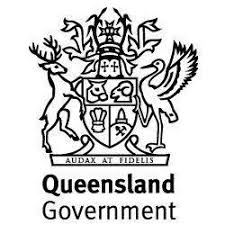Facility Sinking Funds
Chris Kenward
Overview
A facility sinking fund is a fund created to set aside money for future facility expenses. They are used by sport and community clubs who have responsibility for facility costs, often through a lease with their local council.
Whilst council leases will often designate responsibility for some facility costs to the council, they also make the club responsible for undertaking much of the work involved in maintaining fields, clubhouses, floodlights and other assets. The creation of a sinking fund assists the club to be financially prepared to fulfil these responsibilities. By making regular, scheduled deposits into the sinking fund, clubs are able to cope with the unpredictable and sometimes expensive facility maintenance costs when they arise.
Background
Councils are increasingly under pressure to minimise their costs and to justify their expenditures to ratepayers. The days when councils would provide fully maintained facilities to sports and community clubs are over and have moved towards a “user pays” principle. If a club uses a facility for a period of time it is expected to return it to council in a well maintained condition – exactly the same as someone renting a residential property.
Many clubs run on a day to day basis with little or no provision for future costs. Many operate without a financial budget, or if they do run a budget, they often fail to include any provision for future facility costs. As a consequence of these approaches many clubs find themselves facing significant facility maintenance costs without any money put away to cover them. This can place the entire future of the club in jeopardy.
Insurance for buildings and contents may cover clubs in some situations but will not provide funds to replace equipment that has simply broken or worn out over time. It should also be noted that grant funding typically excludes maintenance costs from the eligible expenditures. While grants can be a useful source of funding for facility improvements or equipment, clubs cannot apply for grants to cover maintenance costs.
By establishing a sinking fund clubs are able to undertake repair and maintenance activities in a timely manner often saving money in the longer term. It also allows the clubs to enjoy the full benefits of the facility as they are intended – we have all been to the club where the showers or a toilet is out of use because the club cannot afford to repair them.
What type of costs?
The type of facility costs that a sinking fund should be established to cover are those significant costs that do not happen each year but that are likely to be incurred over a longer period of time. For example, replacing a light globe would not be something covered by a sinking fund but rewiring the clubhouse electrics would be. Typical costs covered by a sinking fund include:
Repairs and maintenance of fire safety equipment – alarm systems, sensors, extinguishers, hoses, etc
Repairs and maintenance of building or site security equipment – cameras, sensors, alarms, control units, recording devices, etc
Repairs and replacement of kitchen canteen equipment – cook tops, ovens, dish washers, fridges, freezers, etc
Repairs and maintenance of clubhouse amenities – bathroom furniture, shower units, water tanks, tiles, plumbing, etc
Building flooring repairs and replacement – tiles, matting, carpets, etc
Painting of clubhouse both interior and exterior
Replacement or repairs of other building components – gutters, roofs, windows, doors, electrical systems, solar panels if installed, pest damage, etc
Replacement of entertainment systems – TV screens, satellite dishes or cable feeds, music and PA systems, etc
Maintenance and replacement of other equipment – groundskeeping assets, high value specialised sporting equipment, floodlighting, etc
How much to contribute to the sinking fund?
This will depend upon the assets for which the club has leaseholder responsibility, other assets that the club owns, and the condition and expected life of those assets.
Using the list above as a starting point a club can undertake a calculation of expected costs over, say, the next 10 years (or the likely length of their tenure at their facility). An estimated annual contribution can then be calculated.
It is strongly advised that clubs do not adopt an approach whereby they contribute below the estimated annual contribution in the early years expecting to “catch-up” later.
By doing this clubs are in effect allowing today’s members to pay less than they should and then passing this cost on to tomorrow’s members which is not in line with a “user pays” principle. Furthermore, experience suggests that “catching up” rarely happens and the club then remains vulnerable to unexpected costs.
Clubs should not seek to withdraw funds from any sinking funds for purposes other than those for which it was established.
Asset Register
Every club should maintain an asset register that lists its assets, their costs and expected useful life. A good asset register will also incorporate information about the expected maintenance costs of assets, including maintenance of facilities for which the club is responsible.
This information will provide the club with a schedule of maintenance and replacement costs expected in future years – and this can be used to calculate their sinking fund contributions.
Cloud-based asset tracking software can help calculate expected maintenance costs and eliminates the manual effort of spreadsheets. CPR Group has developed assetTRAC, asset tracking software, built specifically for clubs and community groups. See more at assettrac.com.au
Joint sinking funds
Where two or more clubs share a facility, and the responsibility for the costs of its upkeep, a couple of rules should apply.
Each club should provide for its own assets by creating its own sinking fund. The clubs should also jointly compile a list of shared use assets and use this to calculate each club’s contribution to a joint sinking fund, separate from their own sinking funds.
A separate bank account should be established for the joint sinking fund with a requirement for a signatory from each club to authorise all payments from this account.
Clubs should not seek to withdraw funds from any sinking funds for purposes other than those for which it was established.




























